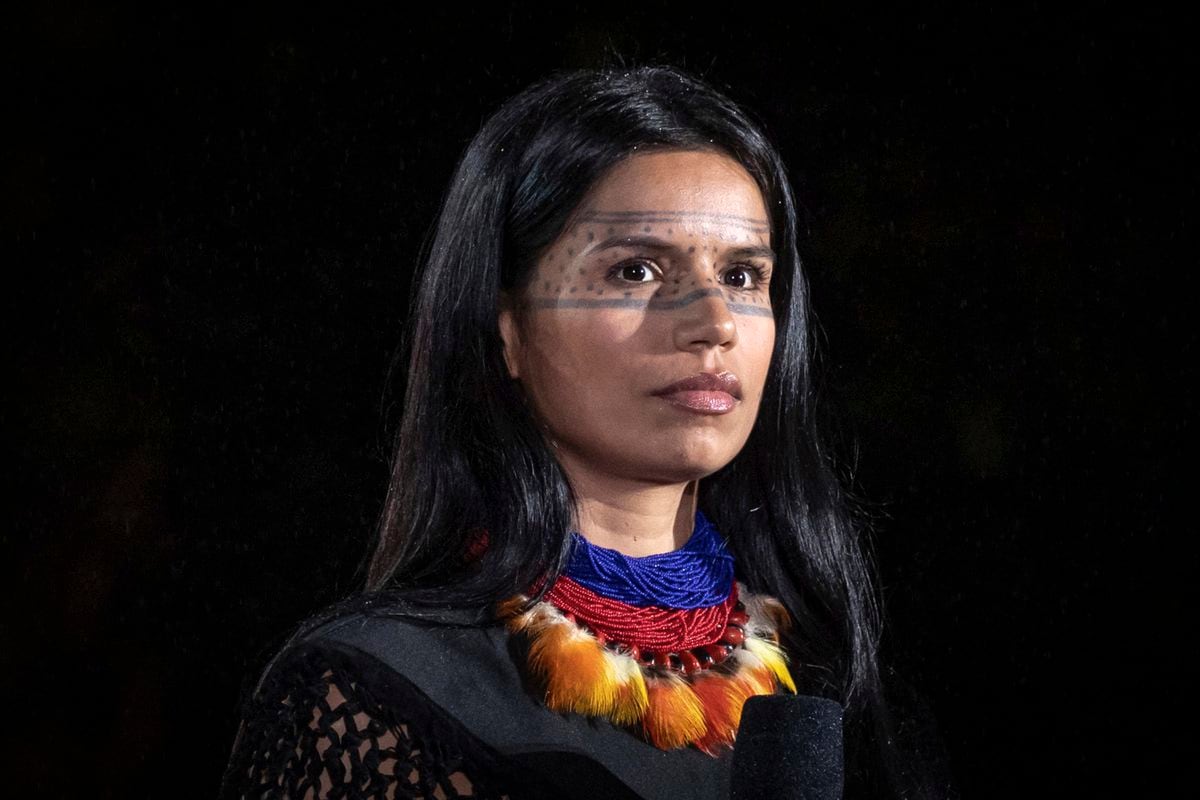As each day Mexico will wake up with a girl with an impossible cleavage giving the weather forecast, some newscast will speak of a crime of passion to refer to a femicide, the protests of women against violence will be reduced to a group of vandals who break public furniture , the afternoon soap opera will show the dispute between two women for the love of a man, a host will end up overwhelmed in social networks by the narration of a soccer game and a presenter will be silenced by her partner on the air.
Machismo is omnipresent on Mexican television. The mirror of a divided, violent and unequal society where 10 women are murdered every day. "Television is a reflection of the society in which we live and an ideological apparatus that builds realities, idealizations and that contributes to creating ideas of what is right and what is wrong," says Amneris Chaparro, researcher at the Center for Research and Gender Studies at the National Autonomous University of Mexico (UNAM).
Despite the advance of Internet consumption in the country, television has played a leading role as a means of education and entertainment for Mexicans, especially for children and youth during the pandemic. This segment of the population, which represents a third of the country's inhabitants, watched an average of almost five hours of television a day, according to the
Statista
portal
,
while the most watched during the confinement were news programs,
magazines
and sporting events. , according to Nielsen Ibope.
Researcher Aimée Vega Montiel from the UNAM Center for Interdisciplinary Research has analyzed the role of television as a fundamental social and cultural instrument in the permanence or eradication of violence and machismo. In the study
The responsibility of Mexican television in the eradication of gender violence,
Vega Montiel monitored 544 hours of programming on open television channels during a month and found more than 900 samples of gender violence against women and girls in newscasts, entertainment programs, sporting events,
children's
shows
, soap operas, interviews, contests and gatherings of the heart. An average of two examples of sexist violence every hour.
“[The move] could practically be considered a femicide. He leaves her dead there, in the area, ”said Multimedios journalist Adrián Marcelo, during the narration of a game in 2019. This is an example of the apology for gender violence that millions of citizens consume in Mexico every day. For decades and thanks to television, characters of this type became references that normalized violence against women. "Sport is one of the last trenches of machismo," considers
Fox Sports
journalist
Marion Reimers, the first Spanish-speaking woman to narrate a
Champions League final
.
"It could practically be considered a femicide. He leaves her dead there in the area"
Totally unfortunate the comment of Adrián Marcelo from #Multimedios, it is not possible to make such an analogy, what was he thinking? 🤦🏻♂️ pic.twitter.com/KFTCRP6m8B
- Miguel Ángel Avilés (@aviles_mgl) September 27, 2019
Every day Reimers receives hundreds of hateful messages via social media.
Despite this, it does not give up its efforts to change that last frontier of machismo from within.
"Sports journalism is a very big Trojan horse, it reaches a lot of people, to the extent that the content is inclusive they will be of higher quality and a large part of the population that is not represented, today You are going to feel much more linked to what you see in the media ”, she pointed out in an interview with this newspaper.
MORE INFORMATION
'Women's time'
The television invasion of the unapologetic machista
Feminism takes Argentine television by storm
"Television is sexist because our culture is sexist," says host Azucena Uresti, head of the 10 pm newscast on Milenio Televisión.
“The most macho thing that exists is the treatment of information.
Despite the efforts, the violence suffered by women continues to be dealt with superficially, ”she says.
Impossible to forget the images of Ingrid Escamilla's body, murdered by her partner and flayed.
His photograph ended up on the cover of several newspapers that did not hesitate to participate in that atrocious femicide.
A few months ago, several collaborators of the
morning
magazine
Hoy
discredited the testimony of the
youtub
er
Nath Campos and made her responsible for her own violation: "Do not lose your conscience so as not to get to these issues [the violation]," said one of the talk shows. The rest approved of the statement. The program had to apologize for the opinions expressed, after the young woman's family threatened to denounce the chain. "Television is a source of education - formal and informal - for society, alongside the family and the school, that is why it has a central task in the search for solutions", points out Aimée Vega Montiel.
The tentacles of machismo on television reach both sides of the screen and not only affect the content. Azucena Uresti tells how the presenters are subjected to a strict beauty canon that only applies to women. The image is still something that weighs on the communicators like a slab. In a quick search with the name of the journalist, the first things that appear are her age, how she looks in a swimsuit and what her legs and buttocks are like. “Women are required to have a different stereotype of beauty than that required of men: image, presentation, beauty, age, wardrobe. We have made progress but we have not reached a point where there is fairness and absolute respect ”, he says.
Televisa presenter Ana Francisca Vega agrees on this point and recalls how in an interview, her interviewee responded to her male partner every time she asked him a question. "There is a huge challenge in terms of machismo in the Mexican political class and the work of women journalists," he points out. The communicator considers that despite how much still needs to be achieved, the television stations have taken some steps in favor of equality and the fight against gender violence, not only in the information they carry out, but also within companies.
Televisión Azteca, for example, was the first television station to create a Gender Unit two years ago to deal with cases of harassment, sexual abuse and harassment. "We have had layoffs and cases where there has been an opportunity to repair the damage with training and mobilization workshops," says Jacqueline L'Hoist, head of the unit. This department was key in the case of the driver and diplomat Andrés Roemer, from whom the television station disbanded at the beginning of the year, after more than 60 women accused him of abuse and sexual harassment. “Television stations are very complex universes, made up of hundreds of people who make different decisions. Sometimes contradictory ”, considers Ana Francisca Vega.
Universes so complex that while the content takes steps to make visible the violence experienced by women, Televisa, Televisión Azteca or Milenio continue to exploit the body of presenters, hostesses and dancers as an advertising claim. Stunning curves, long legs and miniskirts the shorter the better that reduce women to an object of consumption. “We owe it to our audience and also to our advertisers. Obviously, if the sponsor has a beautiful woman in front of him, the impact of his product will be greater. And that means a great benefit for everyone, ”Mauro Morales, head of meteorology at Televisa Monterrey, explained to this newspaper. At that time, to the presenters of the
Gente Regia
program
It seemed like an excellent idea to raise the audience by taking the measurements of the climate presenter Yanet García live.
Years later, the same media conglomerates continue to make content in which the body of female drivers is compared with little clothing for the male delight.
Microviolence on antenna
The displays of machismo in the media can be as subtle as silence. That was what the writer Sabina Berman experienced in the program that she co-hosted with the academic John Ackerman on
Channel Once
. Berman at the beginning of the broadcast, accused the academic of having a macho attitude towards her by ignoring her and not giving her the floor. The public television station did not condemn the presenter's attitudes and dissolved the space before the end of the season. “What we saw was a progressive form of micro-violence that involves disqualifying and ignoring your interlocutor, regardless of what she says, to end up blaming her for not speaking. This is what is called manipulation of perception ”, explains Amneris Chaparro.
Through language, culture and gender roles, machismo "manifests itself, normalizes and reproduces itself," says Chaparro.
"In that sense, television is not exempt from macho images because the people who create content and express themselves within it live immersed in a macho culture," he emphasizes.
Azucena Uresti believes that to tackle this problem it is essential to break the glass ceiling that remains in the industry.
“In the boards where decisions are made there are very few or no women and we need women in leadership positions.
They see us, we are there, but they still do not listen to the speech and what we have to say, "says the host, who emphasizes that television also needs more guests and more experts.
Uresti, like the rest of the interviewees, does not give up on creating corners in the programming that show a more egalitarian and inclusive television.
She hopes that one day the images that objectify women and trivialize gender-based violence will seem like scenes from the past and not something that still happens on screen.
"We are fighting to change reality," he says.
Subscribe here
to the
newsletter
of EL PAÍS México and receive all the informative keys of the current situation of this country








/cloudfront-eu-central-1.images.arcpublishing.com/prisa/AKJFAUJYAVBUBHW36QIU7EW6HE.jpg)
/cloudfront-eu-central-1.images.arcpublishing.com/prisa/3VG35KWHORAZFCS2WL2ZCQF26Q.jpg)